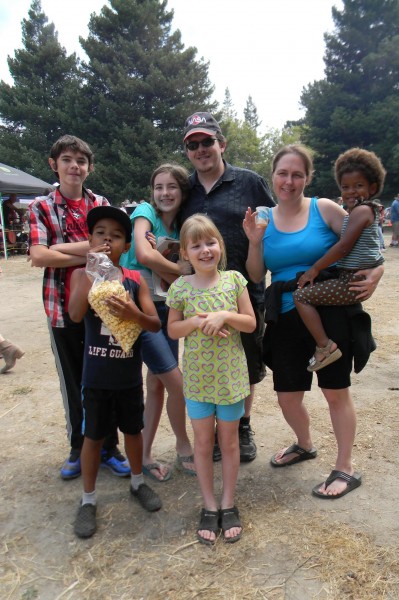Your Adoption Profile: A Picture Is Worth a 1000 Words . . . But Don’t Forget the Captions!
When putting together an adoption profile scrapbook, the main focus is always the pictures. Advice abounds on what pictures to put in, and what to leave out, and often that advice is contradictory. Although a picture is worth 1,000 words, you really must pay attention to captioning those pictures.
1. Spell all words correctly!
If social media has proven anything, it’s that most people can’t spell. I firmly believe that everyone has at least one friend who is a card-carrying member of the Grammar Police. Find that friend and ask him or her to read your captions and other body text. The most common problems are the your/you’re, there/their/they’re, and it’s/its. Also, “balling” is very different than “bawling,” which means crying. This is a family web site, so I can’t tell you what the other “balling” means.
2. Apostrophes indicate possessives, not plurals.
You are not “The Smith’s” or “The Smiths’.” You are “The Smiths.” I am one Chittister, my husband and I make two Chittisters, and we live in the Chittisters’ home. Apostrophe “s” is possessive, “s” or “es” is plural, and “s” apostrophe is both plural and possessive.
3. Everyone does the thing where each partner describes the other.
This has been a trend for the last few years—asking each partner to write a paragraph about the other. It’s overdone and often comes off corny. “Joe says Sue is the best friend he’s ever had. He loves to see her working in the garden.” “Sue thinks Joe would be an excellent father. He’s always playing with the neighborhood kids.”
Instead, get a picture of Sue gardening, and a picture of Joe playing pick-up basketball at the hoop at the end of the cul-de-sac. Then, you caption them, “Sue is a Master Gardener who grows all of our vegetables.” and “Joe may start out gardening, but before long, he’s always playing basketball with the kids down the street.”
4. Provide context.
Group photos have no meaning without context. If you do choose to put group photos of friends or family in your profile, you must include a caption that gives the photo the proper context. For example:

We have no idea who any of those people are, do we?
But if we go with:

Now we know who we’re looking at and why, as well as where they are.
However, we do not want to say:
Jayne, Simon, Inara, Mal, Kaylee, Zoey, and River at the 8th Annual Serenity Valley Apple Fair. Simon and River were adopted from foster care in 2013.
That would be too much information.
5. Find the right amount of words.
Not every picture needs an explanation. However, using one or two words may not be enough. Think about it: WHY are you including this picture? WHAT do you want people to see? In the example above, we wanted people to know that we’re friends with other transracial adoptive families. If you’re including a picture of your parents, and you want people to know that they’re actively involved in your lives, instead of the caption “Sue’s Mom & Dad,” try “Sue’s parents can’t wait to be called Nana and Papa.”
6. Tell your story.
Your adoption profile scrapbook is your story. It should accurately reflect who you are and evoke an emotional response accordingly. To quote John Mayer, “Say what you need to say” — no more, no less. Give your book to people who know you and solicit their input. If you can, watch them read the book. That will give you the best indication of your book’s impact.
Ready to begin your journey of domestic infant adoption? Connect with a caring, experienced adoption professional by clicking here.








